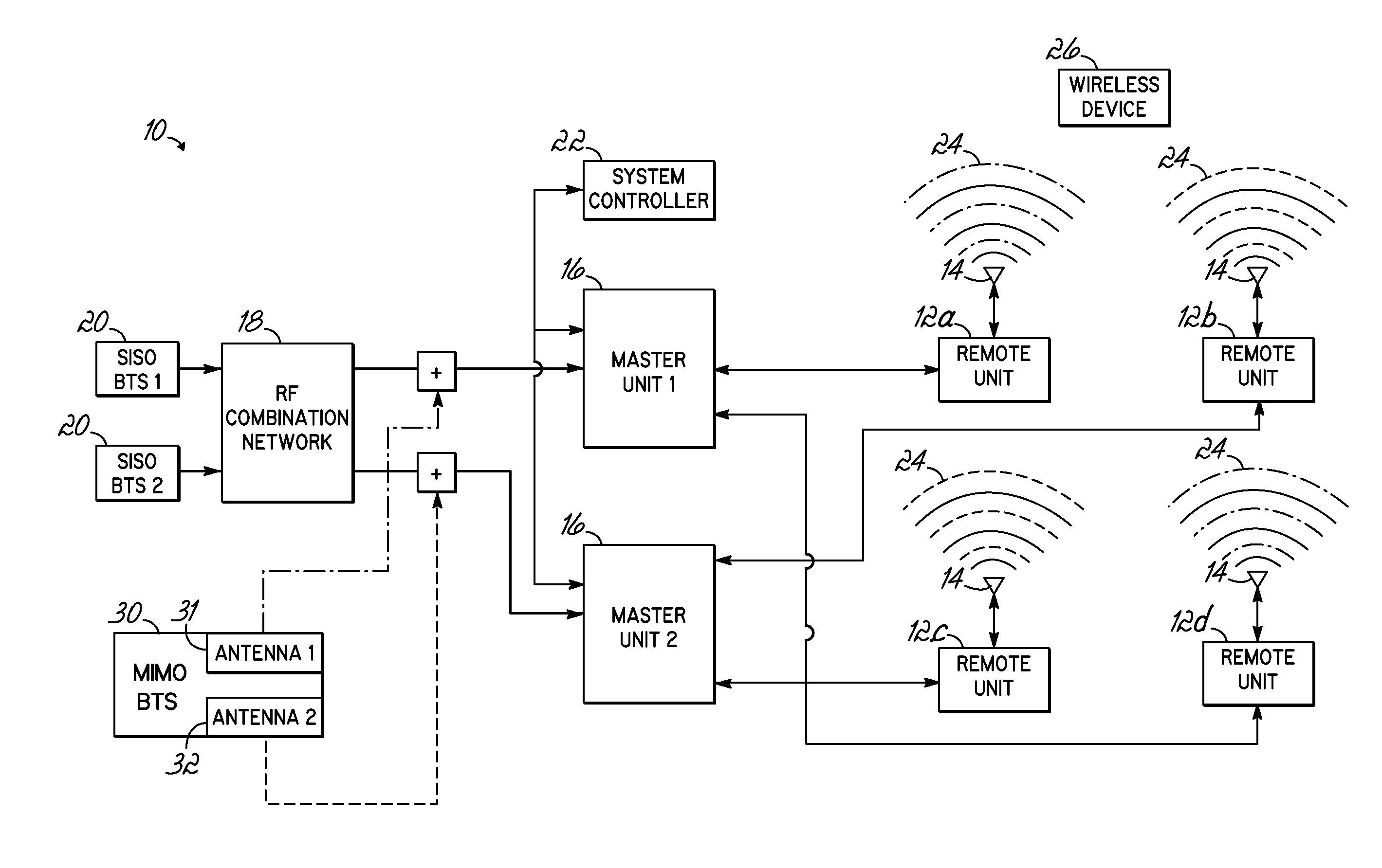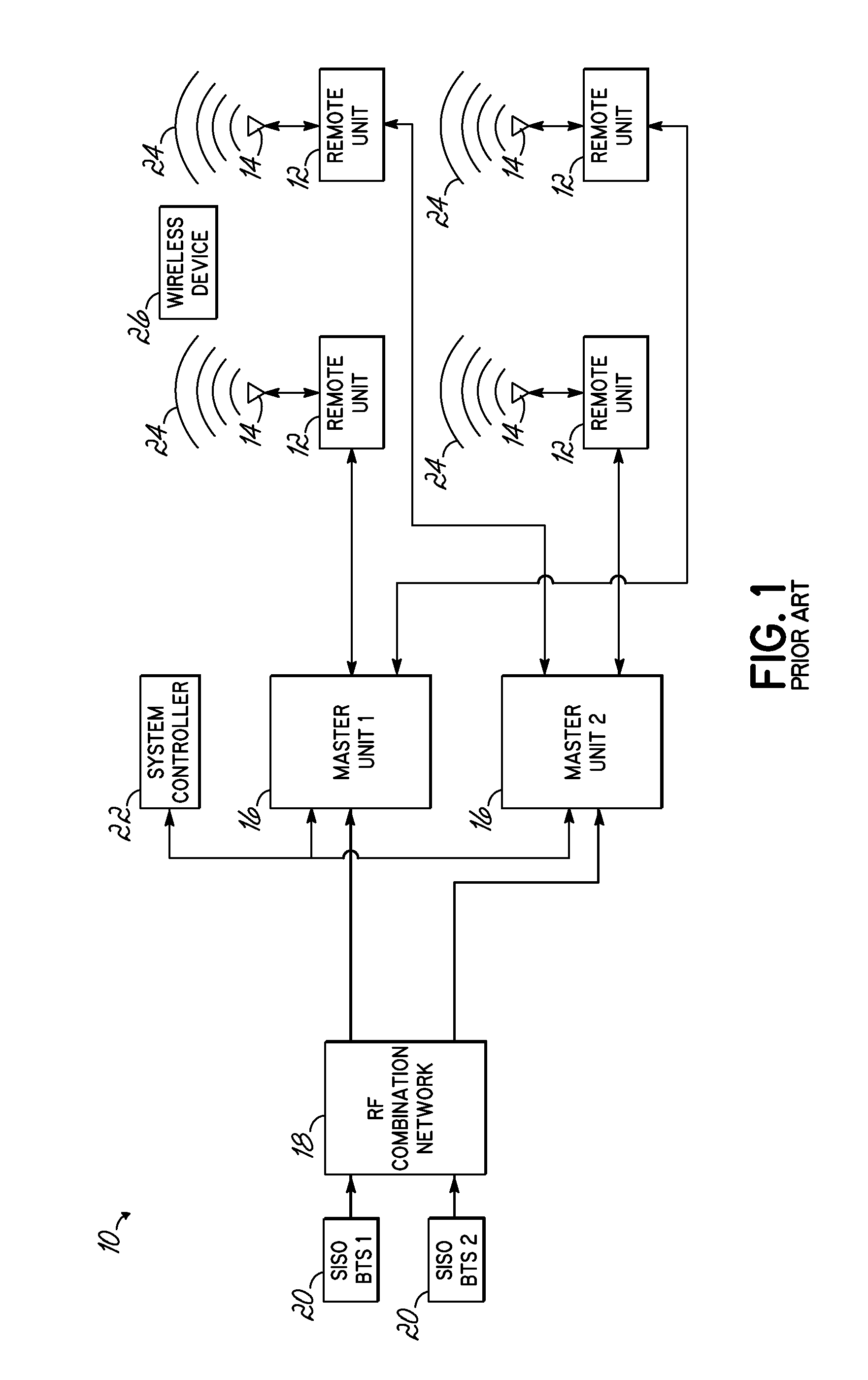Distributed antenna system for MIMO signals
a distributed antenna and wireless technology, applied in the field of wireless communication systems, can solve the problems of signal degradation and collision, significant increase in system capacity, and system illustrated in fig. 1 cannot take advantage of mimo technology
- Summary
- Abstract
- Description
- Claims
- Application Information
AI Technical Summary
Benefits of technology
Problems solved by technology
Method used
Image
Examples
Embodiment Construction
[0020]FIG. 2A illustrates a schematic view of one possible implementation of a MIMO system, wherein a MIMO base station is incorporated with a distributed antenna system, such as that shown in FIG. 1. With respect to FIG. 1, like reference numerals are utilized in FIG. 2A where applicable. As illustrated, two SISO base stations 20 (each SISO base station 20 a “SISO BTS”20) are coupled with each of the remote units. Additionally, a MIMO base station 30, including antennas 31 and 32, are coupled with the remote units 12. Antenna 1 of the MIMO BTS 30 is coupled with remote units 12a and 12d through a first master unit 16 (MASTER UNIT 1). Antenna 2 of the MIMO BTS 30 is coupled with remote units 12b and 12c through as second master unit 16 (MASTER UNIT 2). As such, as illustrated by the wireless signals 24 produced at each remote unit, each master unit will transmit signals from the MIMO BTS 30, in addition to a combined signal from the combination of signals output by the SISO BTSs 20....
PUM
 Login to View More
Login to View More Abstract
Description
Claims
Application Information
 Login to View More
Login to View More - R&D
- Intellectual Property
- Life Sciences
- Materials
- Tech Scout
- Unparalleled Data Quality
- Higher Quality Content
- 60% Fewer Hallucinations
Browse by: Latest US Patents, China's latest patents, Technical Efficacy Thesaurus, Application Domain, Technology Topic, Popular Technical Reports.
© 2025 PatSnap. All rights reserved.Legal|Privacy policy|Modern Slavery Act Transparency Statement|Sitemap|About US| Contact US: help@patsnap.com



